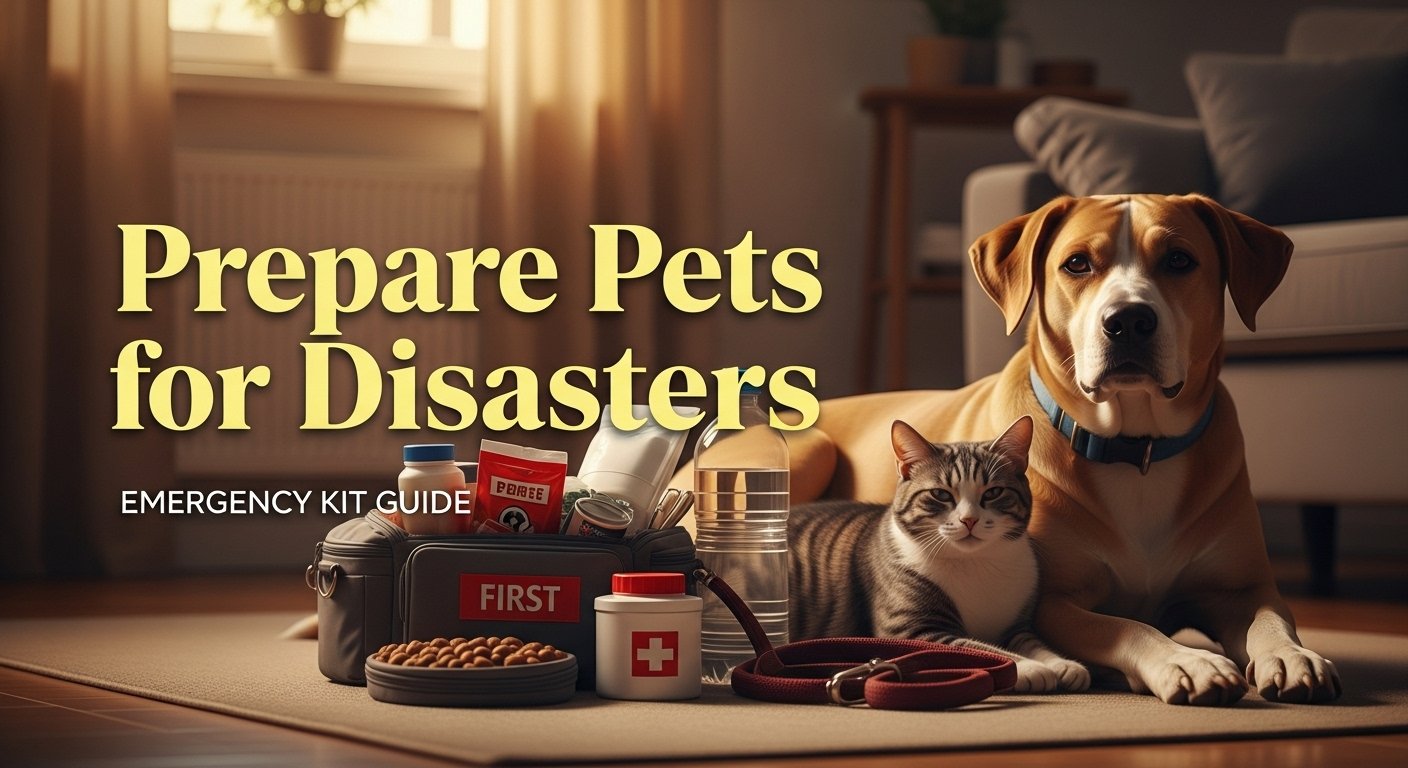
How to Prepare Pets for Natural Disasters (Emergency Kit Guide)
Natural disasters whether hurricanes, wildfires, floods, or earthquakes can strike without warning. As U.S. pet parents, we plan for our own safety, but sometimes forget about our four-legged family members.
In an emergency, being prepared can mean the difference between panic and protection. That’s why having a pet emergency kit is just as essential as your own.
Let’s break down exactly what to pack, how to plan, and what U.S. pet owners need to know to keep their furry friends safe.
Why Pets Need an Emergency Kit
During disasters, evacuation centers may not always accept pets. Travel routes may be chaotic, and supplies in stores may sell out quickly.
A ready-to-go kit ensures:
- Your pet has food and water.
- You have vital records (ID, vaccines).
- Safety gear is ready for fast evacuations.

Essentials for a Pet Emergency Kit
Here’s what every U.S. pet parent should pack:
Food & Water
- At least 3–7 days of food (dry or canned).
- Collapsible bowls.
- Bottled water (separate from your family’s supply).
Identification & Records
- Copies of vet records (vaccinations, medications).
- Updated photos of your pet.
- Microchip info & ID tags.
Safety & Travel
- Sturdy leash and harness.
- Portable carrier (for cats or small dogs).
- Pet seatbelt harness (for car evacuations).
First Aid Supplies
- Pet-safe antiseptic wipes.
- Gauze, bandages, tape.
- Tweezers and scissors.
- Digital thermometer.
Comfort Items
- Blanket or familiar toy.
- Extra litter and bags.
- Waste bags and disposable gloves.

Preparing for Evacuation
Disasters can be chaotic. Train your pet in advance to enter carriers calmly and walk on leashes reliably.
Tips:
- Keep the carrier out at home so it feels familiar.
- Do practice runs with short car rides.
- Reward with treats for calm behavior.

Basic Pet First Aid Knowledge

Even with supplies, you need to know how to use them. Learn the basics of:
- Checking pulse and breathing.
- Treating cuts or scrapes.
- Safely muzzling an injured dog.
- Calming shock or anxiety.
Shelter & Housing During Disasters
Not all emergency shelters allow pets. Plan ahead by:
- Researching pet-friendly hotels along evacuation routes.
- Asking family/friends if they can host your pet temporarily.
- Checking if your local animal shelter provides emergency boarding.
Tech & Smart Prep for U.S. Pet Parents
Technology can be a lifesaver:
- GPS Collars & Tags (Fi, Whistle) → track pets if separated.
- Pet ID Apps → store records digitally.
- Portable Power Banks → keep microchip scanners or GPS collars running.
When to Call the Vet
After a disaster, contact your vet if your pet shows:
- Persistent coughing (from smoke or ash).
- Vomiting, diarrhea, or refusal to eat.
- Limping or injuries from debris.
- Signs of trauma (shaking, hiding, excessive licking).
Final Thoughts
In an emergency, pets rely on us completely. A pet emergency kit ensures you’re ready to protect them when disaster strikes.
Preparation equals peace of mind. With the right plan, U.S. pet parents can keep their furry family members safe—no matter what nature throws their way.



